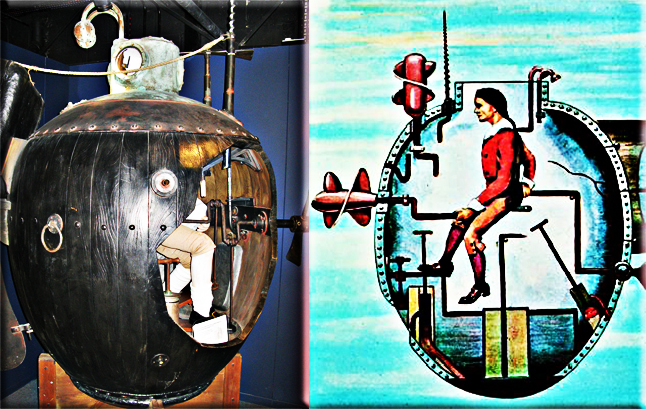
World’s first submarine attack on September 07, 1776
World’s first submarine attack: On this day in 1776, during the Revolutionary War, the American submersible craft Turtle attempts to attach a time bomb to the hull of British Admiral Richard Howe’s flagship Eagle in New York Harbor. It was the first use of a submarine in warfare.
Submarines were first built by Dutch inventor Cornelius van Drebel in the early 17th century, but it was not until 150 years later that they were first used in naval combat. David Bushnell, an American inventor, began building underwater mines while a student at Yale University. Deciding that a submarine would be the best means of delivering his mines in warfare, he built an eight-foot-long wooden submersible that was christened the Turtle for its shape. Large enough to accommodate one operator, the submarine was entirely hand-powered. Lead ballast kept the craft balanced.
Donated to the Patriot cause after the outbreak of war with Britain in 1775, Ezra Lee piloted the craft unnoticed out to the 64-gun HMS Eagle in New York Harbor on September 7, 1776. As Lee worked to anchor a time bomb to the hull, he could see British seamen on the deck above, but they failed to notice the strange craft below the surface. Lee had almost secured the bomb when his boring tools failed to penetrate a layer of iron sheathing. He retreated, and the bomb exploded nearby, causing no harm to either the Eagle or the Turtle.
During the next week, the Turtle made several more attempts to sink British ships on the Hudson River, but each time it failed, owing to the operator’s lack of skill. Only Bushnell was really able to competently execute the submarine’s complicated functions, but because of his physical frailty he was unable to pilot the Turtle in any of its combat missions. During the Battle of Fort Lee, the Turtle was lost when the American sloop transporting it was sunk by the British.
Despite the failures of the Turtle, General George Washington gave Bushnell a commission as an Army engineer, and the drifting mines he constructed destroyed the British frigate Cereberus and wreaked havoc against other British ships. After the war, he became commander of the U.S. Army Corps of Engineers stationed at West Point.
History Channel / Wikipedia / Encyclopedia Britannica / Connecticut History.org /
NavSource (Naval History).org / NAVY Life Official Blog of the U.S. Navy / Breeds Hill Institute.org
First Combat Submarine The “Turtle” - 1776 (YouTube search) 
hr class="article-hr">
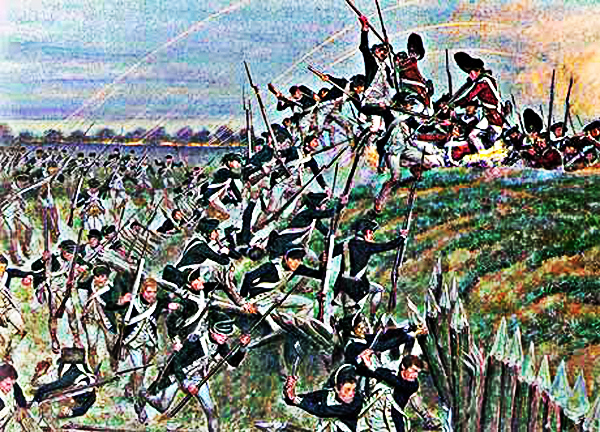
Battle of Yorktown begins on September 28, 1781
Battle of Yorktown begins: On this day in 1781, General George Washington, commanding a force of 17,000 French and Continental troops, begins the siege known as the Battle of Yorktown against British General Lord Charles Cornwallis and a contingent of 9,000 British troops at Yorktown, Virginia, in the most important battle of the Revolutionary War.
Earlier, in a stroke of luck for the Patriots, the French fleet commanded by Francois, Count de Grasse, departed St. Domingue (the then-French colony that is now Haiti) for the Chesapeake Bay, just as Cornwallis chose Yorktown, at the mouth of the Chesapeake, as his base. Washington realized that it was time to act. He ordered Marquis de Lafayette and an American army of 5,000 troops to block Cornwallis’ escape from Yorktown by land while the French naval fleet blocked the British escape by sea. By September 28, Washington had completely encircled Cornwallis and Yorktown with the combined forces of Continental and French troops. After three weeks of non-stop bombardment, both day and night, from cannon and artillery, Cornwallis surrendered to Washington in the field at Yorktown on October 17, 1781, effectively ending the War for Independence.
Pleading illness, Cornwallis did not attend the formal surrender ceremony, held on October 19. Instead, his second in command, General Charles O’Hara, carried Cornwallis’ sword to the American and French commanders.
Although the war persisted on the high seas and in other theaters, the Patriot victory at Yorktown ended fighting in the American colonies. Peace negotiations began in 1782, and on September 3, 1783, the Treaty of Paris was signed, formally recognizing the United States as a free and independent nation after eight years of war.
History Channel / Wikipedia / Encyclopedia Britannica / British Battles / National Park Service.gov /
Mount Vernon.org / Army History.org
Battle of Yorktown 1781 (YouTube search) 
hr class="article-hr">
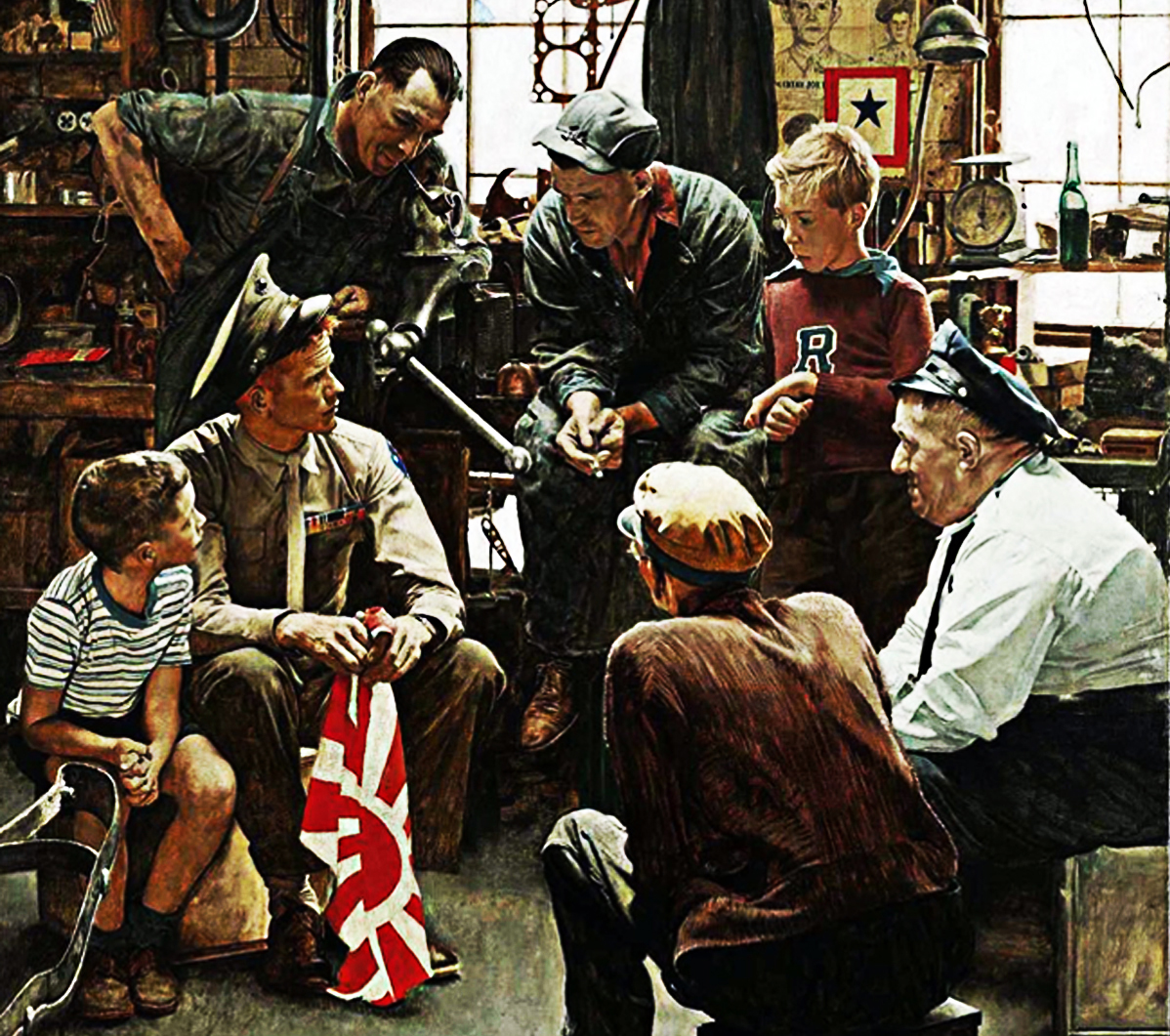
Understanding Military Terminology
Remain-Behind Equipment
(DOD) A team, comprised of at least one chaplain and one enlisted support person, that works together in designing, implementing, and executing the command religious program.
Also called RST.
See also Combatant Command Chaplain; Command Chaplain; Religious Support.
Joint Publications (JP 1-05) Religious Affairs in Joint Operations
Render Safe Pocedures
(DOD) The portion of the explosive ordnance disposal procedures involving the application of special explosive ordnance disposal methods and tools to provide for the interruption of functions or separation of essential components of unexploded explosive ordnance to prevent an unacceptable detonation.
Joint Publications (JP 3-15.1) Barriers, Obstacles, and Mine Warfare for Joint Operations
Rendezvous Area
(DOD) In an amphibious operation, the area in which the landing craft and amphibious vehicles rendezvous to form waves after being loaded, and prior to movement to the line of departure.
Joint Publications (JP 3-02) Amphibious Operations - Intelligence Resource Program
Repairable Item
(DOD) An item that can be reconditioned or economically repaired for reuse when it becomes unserviceable.
Joint Publications (JP 4-09) Doctrine For Logistic Suppost Of Joint Operations
Repair Cycle
(DOD) The stages through which a repairable item passes from the time of its removal or replacement until it is reinstalled or placed in stock in a serviceable condition.
Joint Publications (JP 4-09) Doctrine For Logistic Suppost Of Joint Operations
Joint Publication - Department of Defense Dictionary of Military and Associated Terms
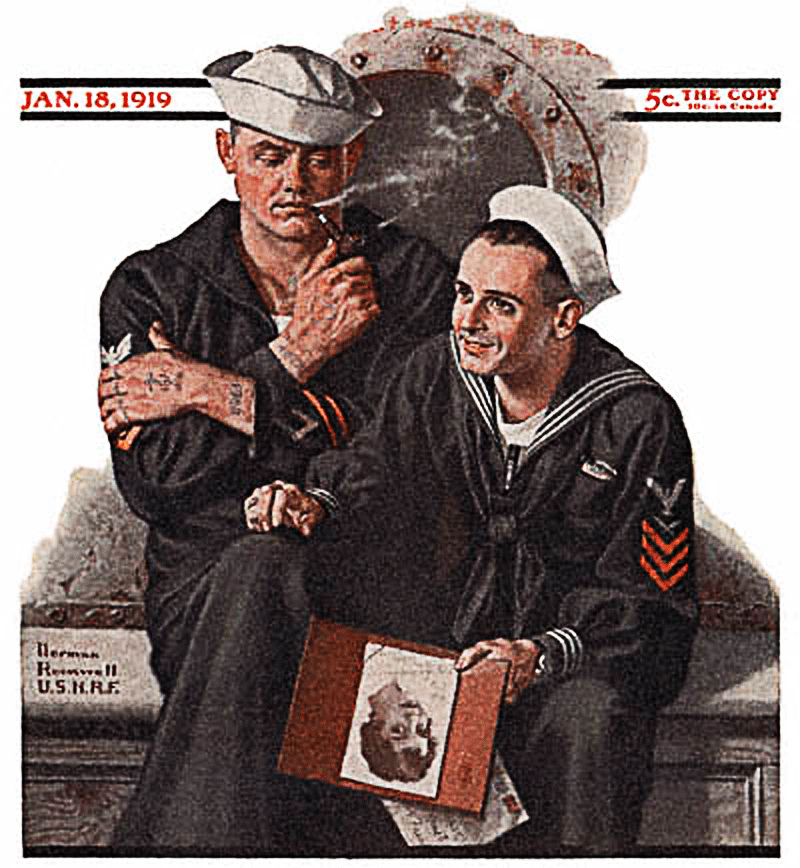
The Old Salt’s Corner

“A Perfect Storm”
Beyond the bay the sun peeked over waves.
The calm belied what destiny would tell.
A statue peers where young men served and gave,
so far from Gloucester shores where seagulls yell;
so far from sheltered harbor's gentle swells,
undaunted sailors dared the Flemish cap,
too far, as nature mixed a hopeless trap.
Like hungry beasts tempt fate to catch their prey
and stray beyond their tribal hunting grounds,
the George's Bank was left to stern that day
to go where surely greater catch abounds,
but while their hold was filled with bounty found,
two angry storms swirled in a deadly dance
and left the Andrea Gail without a chance.
Her captain turned for port but could not know
such wrath of nature blocked their pathway home
and all the crew on wings of angels glowed
the face of God to trust, and not to roam.
Though oft in tumult's grasp they will bemoan
and think to sell their souls in Devil's waves,
yet safe in Heaven's grasp they will be brave.
~ Craig Cornish

“I’m Just Sayin”
“It is hard to imagine a more stupid or more dangerous way of making decisions than by putting those decisions in the hands of people who pay no price for being wrong.”
“There are few things more dishonorable than misleading the young.”
“You will never understand bureaucracies until you understand that for bureaucrats procedure is everything and outcomes are nothing.
“People who enjoy meetings should not be in charge of anything.”
“People who have time on their hands will inevitably waste the time of people who have work to do.”
“The most basic question is not what is best,
but who shall decide what is best.”
“Education is not merely neglected in many of our schools today,
“Talkers are usually more articulate than doers,
Since talk is their specialty.”
“The first lesson of economics is scarcity:
here is never enough of anything to fully satisfy all those who want it.
The first lesson of politics is to disregard the first lesson of economics.”
“Would you bet your paycheck on a weather forecast for tomorrow?
If not,
then why should this country bet billions on global warming predictions that have even less foundation?
“The old adage about giving a man a fish versus teaching him how to fish has been updated by a reader:
Give a man a fish and he will ask for tartar sauce and French fries!
Moreover,
some politician who wants his vote will declare all these things to be among his “basic rights”.”
~ Thomas Sowell

“Thought for the Day”
“The worst thing that happens to you may be the best thing for you if you don't let it get the best of you.”
“Too many people spend money they haven't earned to buy things they don't want to impress people they don't like.”
“The only difference between death and taxes is that death doesn't get worse every time Congress meets.”
“Make crime pay. Become a lawyer.”
“Be thankful we're not getting all the government we're paying for.”
“Good judgment comes from experience,
and a lot of that comes from bad judgment..”
“It isn't what we don't know that gives us trouble,
it's what we know that ain't so.”
“Everything is changing
People are taking their comedians seriously and the politicians as a joke.”
“Make crime pay.
Become a lawyer.”
“If you want to be successful,
it's just this simple.
Know what you are doing.
Love what you are doing.
And believe in what you are doing.”
“Don't gamble;
take all your savings and buy some good stock and hold it till it goes up,
then sell it.
If it don't go up,
don't buy it.”
~ Will Rogers

“What I Learned”
“Guests, like fish, begin to smell after three days.”
“An investment in knowledge pays the best interest.”
“Early to bed and early to rise makes a man healthy, wealthy and wise.”
“A place for everything, everything in its place.”
“If passion drives you, let reason hold the reins.”
“He that is good for making excuses is seldom good for anything else.”
“Any fool can criticize, condemn and complain - and most fools do.”
“He who falls in love with himself will have no rivals.”
“In this world nothing can be said to be certain,
except death and taxes.”
“Without freedom of thought,
there can be no such thing as wisdom -
and no such thing as public liberty without freedom of speech.”
“We must, indeed,
“all hang together or, most assuredly,
we shall all hang separately.”
“Be at war with your vices,
at peace with your neighbors,
and let every new year find you a better man.”
“Tell me and I forget.
Teach me and I remember.
Involve me and I learn.”
~ Benjamin Franklin

Mr. Answer Man Please Tell Us: Happy Labor Day!
Labor Day pays tribute to the contributions and achievements of American workers, and Labor Day 2018 occurs on Monday, September 3 (it’s traditionally observed on the first Monday in September). It was created by the labor movement in the late 19th century and became a federal holiday in 1894. Labor Day also symbolizes the end of summer for many Americans, and is celebrated with parties, parades and athletic events.
Labor Day, an annual celebration of workers and their achievements, originated during one of American labor history’s most dismal chapters.
“What does labor want? Labor wants more schoolhouses and less jails; more books and less arsenals; more learning and less vice; more leisure and less greed; more justice and less revenge; in fact, more of the opportunities to cultivate our better natures.” So said Samuel Gompers, founder of the Federation of Organized Trades and Labor Unions in 1881. On the day that we honor working men and women, let's revisit the origins of Labor Day.
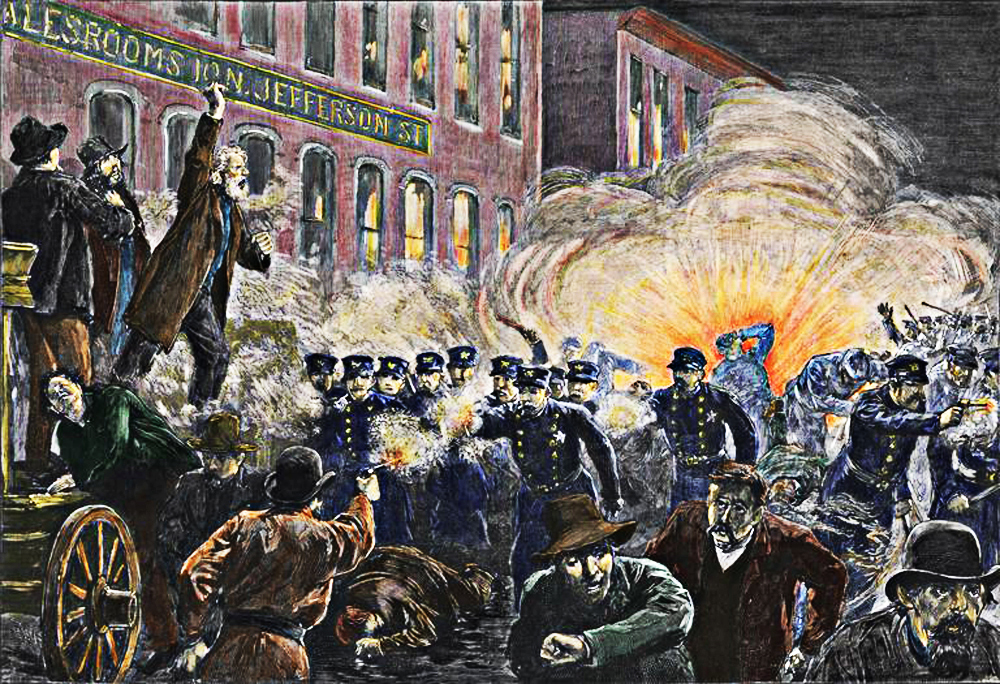
In the late 1800s, at the height of the Industrial Revolution in the United States, the average American worked 12-hour days and seven-day weeks in order to eke out a basic living. Despite restrictions in some states, children as young as 5 or 6 toiled in mills, factories and mines across the country, earning a fraction of their adult counterparts’ wages.
People of all ages, particularly the very poor and recent immigrants, often faced extremely unsafe working conditions, with insufficient access to fresh air, sanitary facilities and breaks.
As manufacturing increasingly supplanted agriculture as the wellspring of American employment, labor unions, which had first appeared in the late 18th century, grew more prominent and vocal. They began organizing strikes and rallies to protest poor conditions and compel employers to renegotiate hours and pay.
Many of these events turned violent during this period, including the infamous Haymarket Riot of 1886, in which several Chicago policemen and workers were killed. Others gave rise to longstanding traditions: On September 5, 1882, 10,000 workers took unpaid time off to march from City Hall to Union Square in New York City, holding the first Labor Day parade in U.S. history.
The idea of a “workingmen’s holiday”, celebrated on the first Monday in September, caught on in other industrial centers across the country, and many states passed legislation recognizing it.Congress would not legalize the holiday until 12 years later, when a watershed moment in American labor history brought workers’ rights squarely into the public’s view. On May 11, 1894, employees of the Pullman Palace Car Company in Chicago went on strike to protest wage cuts and the firing of union representatives.
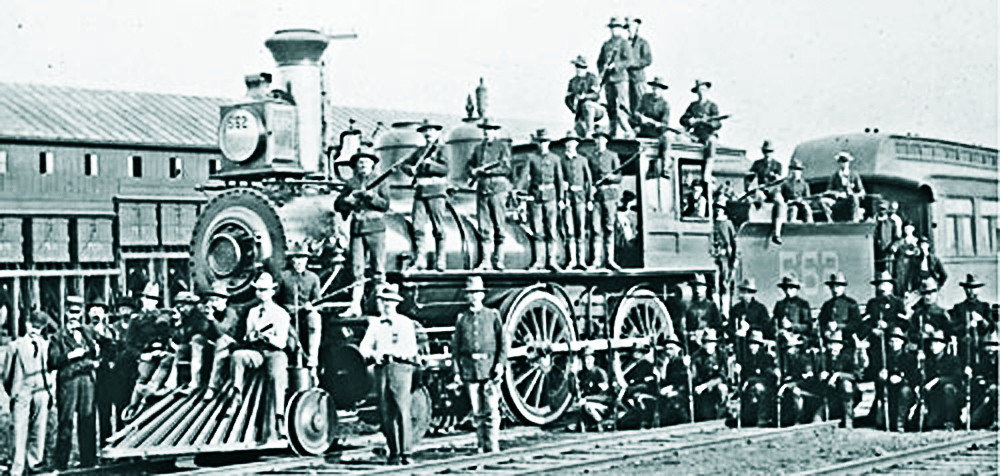
Pullman Strike: On June 26, the American Railroad Union, led by Eugene V. Debs, called for a boycott of all Pullman railway cars, crippling railroad traffic nationwide. To break the strike, the federal government dispatched troops to Chicago, unleashing a wave of riots that resulted in the deaths of more than a dozen workers.
In the wake of this massive unrest and in an attempt to repair ties with American workers, Congress passed an act making Labor Day a legal holiday in the District of Columbia and the territories. More than a century later, the true founder of Labor Day has yet to be identified.
Many credit Peter J. McGuire, cofounder of the American Federation of Labor, while others have suggested that Matthew Maguire, a secretary of the Central Labor Union, first proposed the holiday.
Labor Day is still celebrated in cities and towns across the United States with parades, picnics, barbecues, fireworks displays and other public gatherings. For many Americans, particularly children and young adults, it represents the end of the summer and the start of the back-to-school season.
Encyclopedia Britannica
• Business Insider
• Department Of Labor
• History
• Quora
• Smithsonian
• Wikipedia
Labor Day Holiday History (YouTube) 
hr class="article-hr">

NAVSPEAK aka U.S. Navy Slang
AO: Aviation Ordnanceman, personnel assigned to Aircraft Carriers, Helicopter Carriers and Aviation Squadrons that store, handle, assemble, transport and load all weapons and drop tanks along with electronic counter measure pods, dispensers and sono-bouys on Navy and Marine Corps aircraft.
Other duties include storing and maintaining unit small arms as well as training and qualifying squadron member in their use and the use of deadly force. Aviation Ordnancemen are expected to have a broad knowledge base of the rate and and be able to perform any duties of the rate.
AOCS: Aviation Officer Candidate School; since discontinued pre-commissioning programs at NAS Pensacola, FL and Bremerton, WA that trained both prior service and non-prior service college graduates to become naval officers and to subsequently qualify as either Naval Aviators, Naval Flight Officers, Air Intelligence Officers, or Aircraft Maintenance Duty Officers
- program merged into with Officer Candidate School from Newport, RI in late 1990s and then in the late 2000s moved to NETC Newport, RI.
AOL: Absent Over Leave; Navyspeak for AWOL. See UA, the correct Naval term.
AOM: All Officers Meeting, held for a variety of reasons like training, port calls, mess issues, etc.
Armpit of the Med: Naples, Italy. So called on account of its unique smell and the overall (un)cleanliness of the city.
ASH Receiver: An “ash tray”. Newbie sailors are sometimes sent all over base to locate an ASH Receiver as a joke.
ASMO: Assignment Memorandum Orders. Mostly issued in boot camp to set a recruit back in training due to poor performance.
Wiktionary.org

Just for you MARINE
AO: Area of Operations during a deployment.
ARMY: “Ain't Ready to be a Marine Yet”, Aren't Really Men/Marines Yet, or “Air Force Rejected Me Yesterday” - backronym pejorative term used for the Army.
Arty Short for Artillery..
Wikipedia.org

Naval Aviation Squadron Nicknames
Helicopter Maritime Strike Weapons School Pacific - nicknamed the “Honey Badgers”
United States Navy - Naval Air Station North Island - Naval Base Coronado - Coronado peninsula on San Diego Bay in San Diego, California.
Wikipedia.org

Where Did That Saying Come From?

“Let your hair down” Meaning: To relax or be at ease. Behave in a free or uninhibited manner.
Origin: Parisian nobles risked condemnation from their peers if they appeared in public without an elaborate hairdo. Some of the more intricate styles required hours of work, so of course it was a relaxing ritual for these aristocrats to come home at the end of a long day and let their hair down.
Letting one's hair down was a commonplace part of womens' daily activities in the 17th century. The hair was normally pinned up and was let down for brushing or washing. The term used for this at the time was dishevelling. Anyone who is unkempt and generally untidy might now be described as dishevelled but then it applied specifically to hair which was unpinned. The first reference I can find which refers specifically to this is John Cotgrave's, The English treasury of wit and language, 1655:
“Descheveler, to discheuell; to pull the haire about the eares.”
Phrases.org UK

Science & Technology

FEATURE: A neutrino portrait of our galaxy reveals high-energy particles from within the Milky Way
• Europe's space telescope launches to target universe's dark mysteries
Complex organosulfur molecules on comet 67P: Evidence from Rosetta orbiter and the lab
• NASA's Mars helicopter 'phones home' after no contact for 63 days
• New image from James Webb Space Telescope reveals astonishing Saturn and its rings
GitHub's Copilot may lead to global $1.5 trillion GDP boost
• Xeroderma pigmentosum study tests artificial antisense oligonucleotides as therapeutic
• Autism-related genes in non-autistic individuals show a long-term socioeconomic influence
After several turbulent days, flight disruptions ease despite worries about 5G signals
• Displays controlled by flexible fins and liquid droplets more versatile, efficient than LED screens
• Clinical trial suggests shorter course antimicrobial therapy option for children with UTI
Phys.org / MedicalXpress / TechXplore
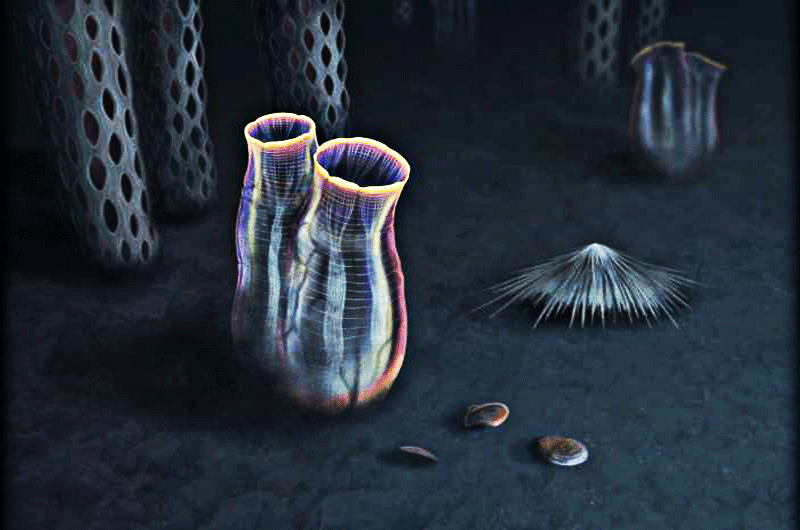
FEATURE: Discovery of 500-million-year-old fossil reveals astonishing secrets of tunicate origins
• Researchers grow precise arrays of nanoscale LEDs
Study shows the Earth formed from dry, rocky building blocks
• Artificial cells demonstrate that “life finds a way”
• Researchers peer into Earth's inner core: Data show solid metal sphere is “textured”
Superconducting nanowire camera will explore brain cells, space
• American mink regrow their brains in a rare reversal of the domestication process - Farm animals look different from their wild counterparts in many ways, and one difference is consistent: their brains are smaller than those of their ancestors.
• Researchers find eruption date of Laacher See volcano is wrong by 130 years
Researchers create highly conductive metallic gel for 3D printing
• New genetic technology developed to halt malaria-spreading mosquitoes
• Unlocking the mystery of long-lasting cancer treatment
Phys.org / MedicalXpress / TechXplore

Bizarre News (we couldn’t make up stuff this good - real news story)
Fountains of diamonds erupt from Earth's center as supercontinents break up

Researchers have discovered a pattern where diamonds spew from deep beneath Earth's surface in huge, explosive volcanic eruptions.
The breakup of supercontinents may trigger explosive eruptions that send fountains of diamonds shooting up to Earth's surface.
Diamonds form deep in Earth's crust, approximately 93 miles (150 kilometers) down. They are brought up to the surface very quickly in eruptions called kimberlites. These kimberlites travel at between 11 and 83 mph (18 to 133 km/h), and some eruptions may have created Mount Vesuvius-like explosions of gases and dust, said Thomas Gernon, a professor of Earth and climate science at the University of Southampton in England.
Researchers noticed that kimberlites occur most often during times when the tectonic plates are rearranging themselves in big ways, Gernon said, such as during the breakup of the supercontinent Pangaea. Oddly, though, kimberlites often erupt in the middle of continents, not at the edges of breakups - and this interior crust is thick, tough and hard to disrupt.
“The diamonds have been sat at the base of the continents for hundreds of millions or even billions of years”, Gernon said. “There must be some stimulus that just drives them suddenly, because these eruptions themselves are really powerful, really explosive.”
Gernon and his colleagues began by looking for correlations between the ages of kimberlites and the degree of plate fragmentation occurring at those times. They found that over the last 500 million years, there is a pattern where the plates start to pull apart, then 22 million to 30 million years later, kimberlite eruptions peak.
(This pattern held over the last 1 billion years as well but with more uncertainty given the difficulties of tracing geologic cycles that far back.)

For example, the researchers found that kimberlite eruptions picked up in what is now Africa and South America starting about 25 million years after the breakup of the southern supercontinent Gondwana, about 180 million years ago. Today's North America also saw a spike in kimberlites after Pangaea began to rift apart around 250 million years ago.
Interestingly, these kimberlite eruptions seemed to start at the edges of the rifts and then marched steadily toward the center of the land masses.
To figure out what was driving these patterns, the researchers used multiple computer models of the deep crust and upper mantle. They found that when tectonic plates pull apart, the base of the continental crust thins — just as the crust up top stretches out and forms valleys. Hot rock rises, comes into contact with this now-disrupted boundary, cools and sinks again, creating local areas of circulation.
These unstable regions can trigger instability in neighboring regions, gradually migrating thousands of miles toward the center of the continent. This finding matches the real-life pattern seen with kimberlite eruptions starting near rift zones and then moving to continental interiors, the researchers reported July 26 in the journal Nature.
But how do these instabilities cause explosive eruptions from deep in the crust? It's all in the mixing of just the right materials, Gernon said. The instabilities are enough to allow rock from the upper mantle and lower crust to flow against each other.
This churns together rock with lots of water and carbon dioxide trapped within it, along with many key kimberlite minerals - including diamonds. The result is like shaking a bottle of champagne, Gernon said: eruptions with a lot of explosive potential and buoyancy to drive them to the surface.
The findings could be useful in searching for undiscovered diamond deposits, Gernon said. They might also help explain why there are other types of volcanic eruptions that sometimes occur long after a supercontinent breakup in regions that should be largely stable.
“It’s a fundamental and highly organized physical process”, Gernon said, “so it’s likely not just kimberlites responding to it, but it could be a whole array of Earth system processes that are responding to this as well.”
Related: Rare diamonds suggest water lurks much deeper in Earth's interior than scientists thought
Miners just discovered the largest pink diamond in more than 300 years
Diamonds need an electric zap to crystallize deep inside Earth
Live Science (06/29/2023) 


SONG FACTS

“Sky Pilot”  - The Animals
- The Animals
Album: The Twain Shall Meet
Released 1968 
A “Sky Pilot” is a military chaplain, hence the lyric “He blesses the boys as they stand in line.” The song finds the chaplain telling the soldiers that they are fighting for a greater cause, as they are “soldiers of God”. At the end of the song, one of the soldiers returns from battle and realizes the words of the chaplain go against what he learned in the Bible: “Thou shalt not kill (‘murder’).”
Sound effects of fighting, gunfire, airplanes, and bagpipes were used. The pipe band was the Royal Scot's Dragoon Guards, a Highland regiment. Lead singer Eric Burdon tape-recorded them at a school and used the pipe music during the middle of the song along the war sound effects.
Burdon received an angry letter from the British government for his use of the pipe music. The tune he used was
“All The Bluebonnet's Are Over The Border”  ,
which is a classic Scottish war piece written as an anti-war epic during the Vietnam War.
,
which is a classic Scottish war piece written as an anti-war epic during the Vietnam War.
“Sky Pilot”  got little airplay as it was over seven minutes long. It also employs a string section and a trumpet, making it even less radio-friendly.
got little airplay as it was over seven minutes long. It also employs a string section and a trumpet, making it even less radio-friendly.
The single was split into two parts to fit on the 45. You had to flip the record to hear the whole song.
The lyrics, “He'll stay behind and he'll meditate” are sung by Burdon as “He stay'll behind and he'll meditate” on the version played mostly on the radio.
MORE SONGS
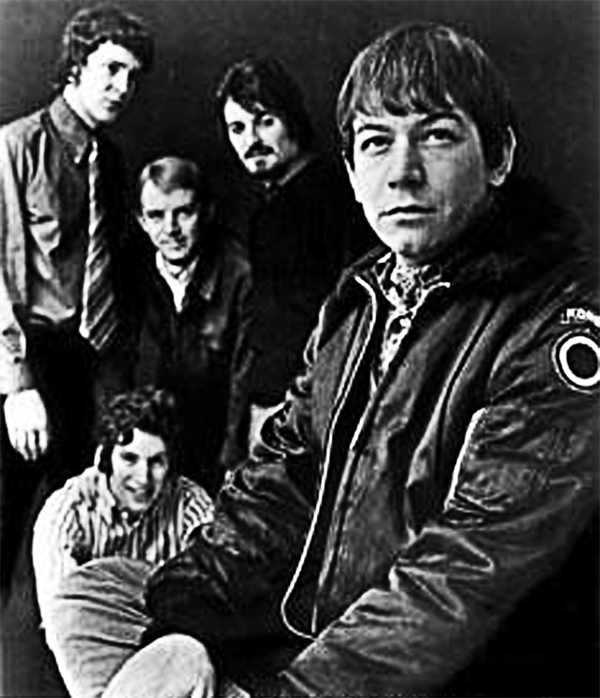
1964
“The House Of The Rising Sun”  Live
Live  Video
Video 
“I'm Crying”  Live
Live  Video
Video 
“Boom Boom”  Live
Live  Video
Video 
1965
“Bring It On Home to Me”  Live
Live  Video
Video 
“Don't Let Me Be Misunderstood”  Live
Live  Video
Video 
“It's My Life”  Live
Live  Video
Video 
“We Gotta Get Out Of This Place”  Live
Live  Video
Video 
1966
“See See Rider”  Live
Live  Video
Video 
“Don't Bring Me Down”  Live
Live  Video
Video 
“Inside Looking Out”  Live
Live  Video
Video 
1968
“Sky Pilot”  Live
Live 
“Sky Pilot” - The Animals 1968 Continued ...
The Animals official site (The Animals Discography) / Rock & Roll Hall of Fame / Billboard / All Music / Song Facts /
Ultimate Classic Rock / The Animals
Image: “The Twain Shall Meet (album)” by The Animals

Trivia
● What is the universal solvent?
Answer to Trivia
READ MORE: USGS.gov
● What nationality was Johnny Weissmuller?
Answer to Trivia
READ MORE: USOPM.org
● What is crossed with a blackberry and loganberry to produce a boysenberry?
Answer to Trivia
READ MORE: YouTube
● How many people signed both the Declaration of Independence and the U.S. Constitution?
Answer to Trivia
READ MORE: Harvard University.edu

A Test for People Who Know Everything
From the Jeopardy Archives Category - “RAISE THE FLAG” ($200)
“A flag with real significance for peaceful uses; proverbially, if you ‘raise’ it you yield.”
Answer to Jeopardy READ MORE: History
From the Jeopardy Archives Category - “RAISE THE FLAG” ($400)
“Historically, a ship flies a distress flag at half-mast or this way.”
Answer to Jeopardy READ MORE: Carrot-Top
From the Jeopardy Archives Category - “RAISE THE FLAG” ($600)
“In a third verse this title object ‘in triumph doth wave / O'er the land of the free and the home of the brave’.”
Answer to Jeopardy READ MORE: CLibrary Of Congress.gov
From the Jeopardy Archives Category - “RAISE THE FLAG” ($800)
“Gonfalon, an old name for a flag, was once used by baseball writers to mean this, what every team wants to win.”
Answer to Jeopardy READ MORE: Wikipedia
From the Jeopardy Archives Category - “RAISE THE FLAG” ($1,000)
“This other name for an army base or post also refers to the huge 20' x 38' flag flown over it.”
Answer to Jeopardy READ MORE: Wikipedia

Joke of the Day

The Glass Is Half-Full Or The Glass Is Half-Empty
Understanding Engineers
To the optimist, the glass is half-full
To the pessimist, the glass is half-empty.
To the engineer, the glass is twice as big as it needs to be.
What is the difference between mechanical engineers and civil engineers?
Mechanical engineers build weapons.
Civil engineers build targets.






























